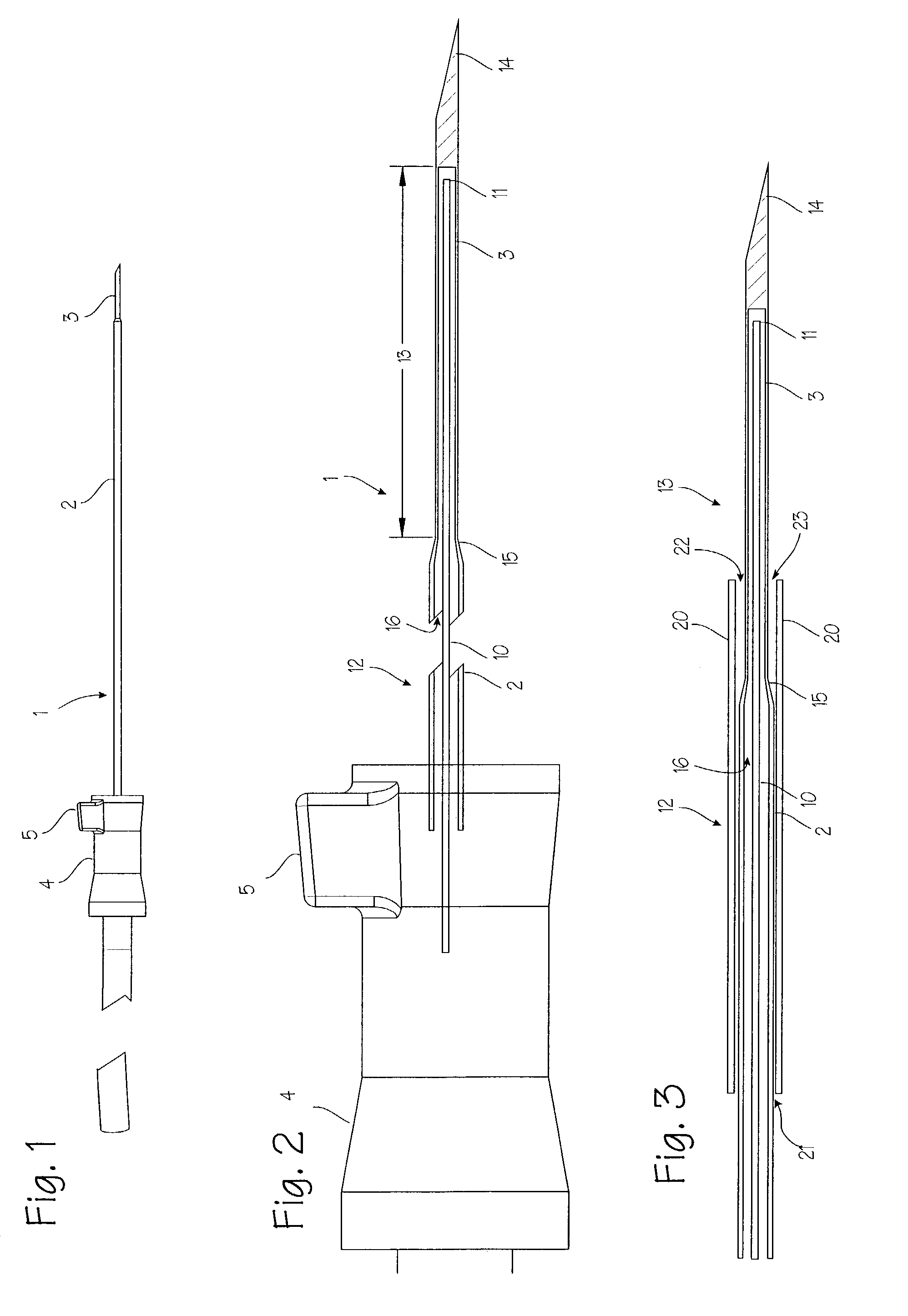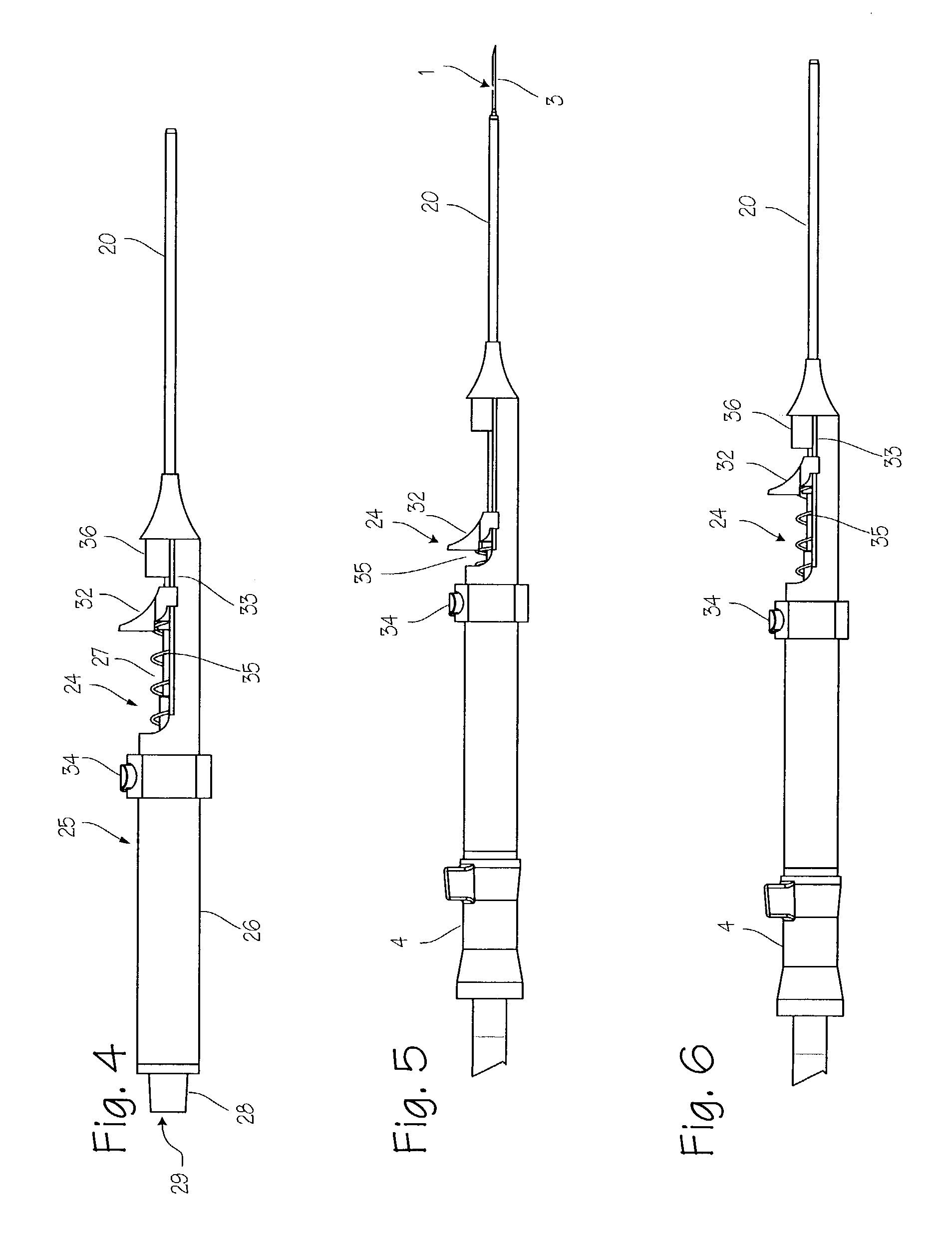Device for biopsy of tumors
a tumor and biopsy technology, applied in the field of breast cancer diagnosis and treatment, can solve the problems of difficult needle force into the tumor, tumors that are too tough to yield to suction and deformity, and devices that are not designed for resection, so as to prevent the destruction of tumor cells and reduce the dispersion of tumor cells
- Summary
- Abstract
- Description
- Claims
- Application Information
AI Technical Summary
Benefits of technology
Problems solved by technology
Method used
Image
Examples
Embodiment Construction
[0031]FIG. 1 illustrates an adhesion probe 1 for securing a breast tumor during a biopsy or resection procedure. This probe uses Joule-Thomson cooling or liquid nitrogen to create a lightly cooled region at the distal tip. This lightly cooled region adheres to a suspect lesion or tumor. The adhesion probe 1 comprises a long, slender yet rigid tube 2. A short rigid penetrating segment 3 extends distally from the distal end of the rigid tube, and a suitable handle 4 is mounted on the proximal end of the tube. The handle includes a quick release mechanism which is operable through quick release actuator 5.
[0032]FIG. 2 illustrates the adhesion probe 1 in cross section, showing the rigid tube 2, the distal penetrating segment 3 and the handle 4. A coolant inlet tube 10 passes through the handle and the rigid tube, extending to the distal end of the rigid tube, and terminating just proximal of the distal tip of the penetrating segment. The inlet tube has an orifice 11 at the distal end of...
PUM
 Login to View More
Login to View More Abstract
Description
Claims
Application Information
 Login to View More
Login to View More - R&D
- Intellectual Property
- Life Sciences
- Materials
- Tech Scout
- Unparalleled Data Quality
- Higher Quality Content
- 60% Fewer Hallucinations
Browse by: Latest US Patents, China's latest patents, Technical Efficacy Thesaurus, Application Domain, Technology Topic, Popular Technical Reports.
© 2025 PatSnap. All rights reserved.Legal|Privacy policy|Modern Slavery Act Transparency Statement|Sitemap|About US| Contact US: help@patsnap.com



